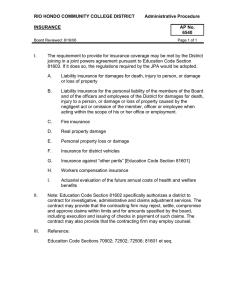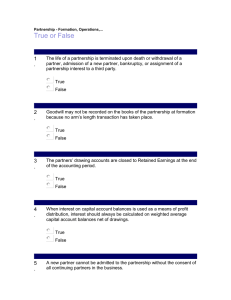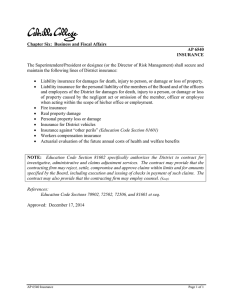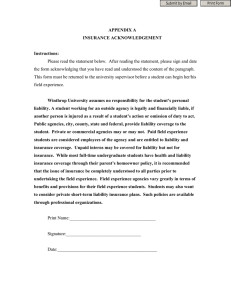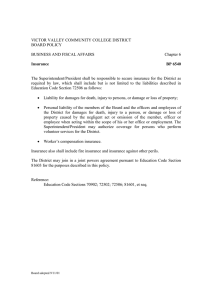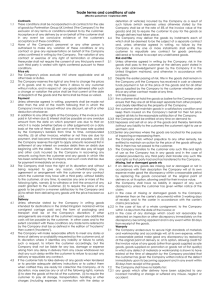University of California ERM Toolbox Training
advertisement
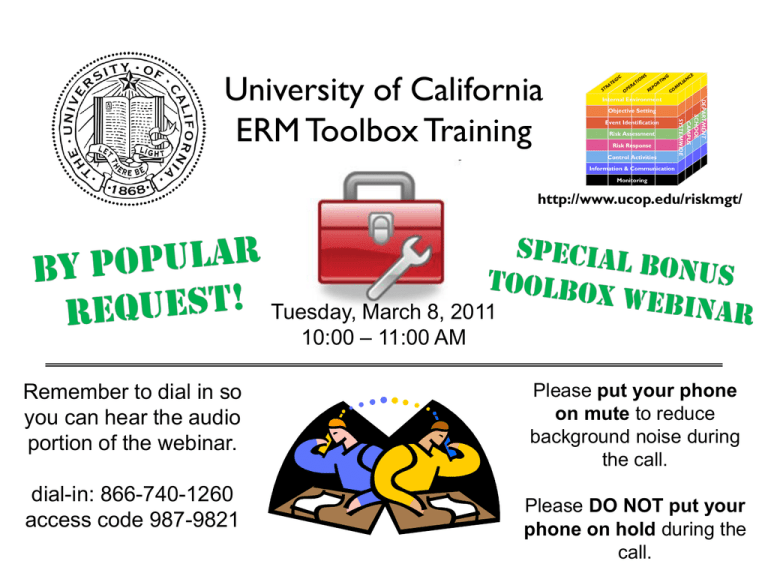
TE NS C GI O RA PE G IN RT O TI RE PO CE AN M CO Internal Environment Objective Setting Event Identification Risk Assessment Risk Response Control Activities I PL DEPARTMENT SCHOOL CAMPUS SYSTEMWIDE University of California ERM Toolbox Training RA ST Information & Communication Monitoring http://www.ucop.edu/riskmgt/ Tuesday, March 8, 2011 10:00 – 11:00 AM Remember to dial in so you can hear the audio portion of the webinar. dial-in: 866-740-1260 access code 987-9821 Please put your phone on mute to reduce background noise during the call. Please DO NOT put your phone on hold during the call. UNIVERSITYOFCALIFORNIA Understanding Risk Norman Hamill Office of General Counsel Office of the President March 2011 2 Understanding Risk Common questions: • What’s the point of investigating, evaluating and ranking our risks when there are insufficient resources to reduce the risk? Doesn’t this effort create or increase the University’s legal risk? Response: • Ignoring a known risk because a lack of resources isn’t consistent UNIVERSITYOFCALIFORNIA with our ethical standards and doesn’t protect against liability • To the contrary, understanding risk represents reasonable action that can actually reduce legal risk 3 Statement of Ethical Values http://www.ucop.edu/ucophome/coordrev/policy/Stmt_Stds_Ethics.pdf Commitment to Integrity, Excellence, Accountability & Respect UNIVERSITYOFCALIFORNIA “Members of the University community are expected to exercise responsibility appropriate to their position and delegated authorities. They are responsible to each other, the University and the University’s stakeholders both for their actions and their decisions not to act.” “University business is to be conducted in conformance with legal requirements….” 4 Legal Framework Two theories of liability: • Direct liability if The Regents fails to comply with a mandatory duty imposed by statute ―Govt Code §835 – liability for injury caused by a dangerous condition of public property • Vicarious liability for the negligent acts or omissions of its UNIVERSITYOFCALIFORNIA employees ―Did the employee act as a reasonably prudent person under the same or similar circumstances 5 Legal Framework Two important defenses: • Dangerous condition: Did the University act reasonably in light of the circumstances, including available resources ―Govt. Code 835.4 - The reasonableness of the action or inaction UNIVERSITYOFCALIFORNIA of the public entity shall be determined by taking into consideration … the practicability and cost of protecting against the risk of such injury. • Discretionary immunity ―Govt. Code 820.6 – no liability if “the act or omission was the result of the exercise of the discretion vested in [the employee], whether or not such discretion be abused. 6 Application Two choices – take steps to understand the risk or ignore the risk Which choice better meets ethical obligations and is consistent with the legal framework? UNIVERSITYOFCALIFORNIA Which choice better supports reducing/managing/eliminating the risk when resources are available? 7 Application Action or inaction and ethics: • Integrity, excellence, accountability; • Exercising responsibility • Responsible … for their actions and their decisions not UNIVERSITYOFCALIFORNIA to act • Conformance with legal requirements 8 Application Action or inaction and legal framework: • Reasonableness standard for tort liability • Doing nothing is not a defense • Lack of resources can be a defense – if you don’t understand the risk, how can you make a case that there were insufficient resources UNIVERSITYOFCALIFORNIA • If you act reasonably, you won’t be negligent • If you pass on information to a superior who has the discretion to make the final decision, it improves the likelihood discretionary immunity applies 9 Dos and Don’ts Do your part. Do what you can. Do your best with what you have. UNIVERSITYOFCALIFORNIA Don’t ignore a risk. Don’t let legal risk prevent progress. Don’t be afraid to call OPRS or OGC. 10
